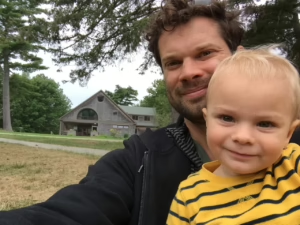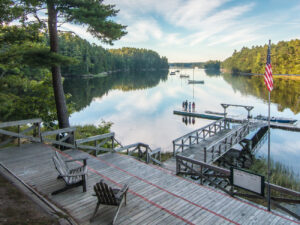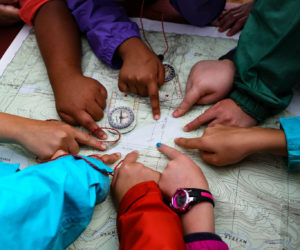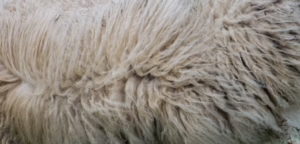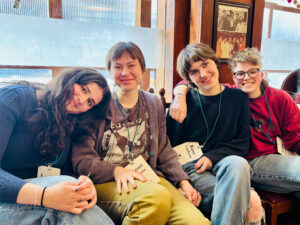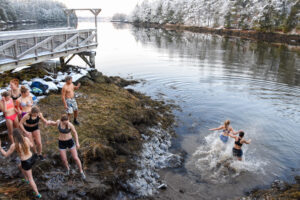According to Greg Shute, Chewonki’s Director of Northwoods and Coastal Properties, it was 1992 when Chewonki first hosted a Wilderness First Responder (WFR) course taught by Wilderness Medical Associates International. Since then, Chewonki remains one of WMAI’s longest-standing hosts, and the “Winter WFR at the Wonk ” is considered one of the more challenging courses around. That’s mostly because of the weather, but it’s balanced by Chewonki being known as one of the warmest and most welcoming host sites anywhere on the circuit.
Wilderness Medical Associates International grew out of the first aid training for instructors at Hurricane Island Outward Bound School – just up the coast in Penobscot Bay – in the late 1980s. It provides intensive, multi-day courses in emergency care that is adapted for remote settings, hostile environments, and limited resources. WMAI conducts hundreds of courses each year, with a curriculum that has been translated into seven languages, and has been taught on all seven continents. By blending well-established experiential education methods with the latest research from the field of backcountry rescue, WMAI classes provide an effective model for developing anyone’s ability to provide emergency care, anywhere.

The “Winter WFR at the Wonk” traditionally happens in the first week of January, as the weather dances between every kind of precipitation nature can produce, while accompanied by a rich and robust symphony of winds. The assumption of wilderness medicine is that you’re at least 2 hours from definitive care. This forces us to think critically about the care we provide. Foul weather just drives home the point that sometimes the conditions and evacuation route can be bigger problems than whatever the patient’s issues may be. Tradition also dictates that “the ‘W’ doesn’t stand for ‘Wimpy’! It stands for ‘Weather’!” – and these students lived up to the challenge.

In other ways, this year’s courses were very different from the past. But Chewonki’s high standards around Covid safety were reflected everywhere – and the precautions wove right into our sense of communal safety and success. The classes were capped at 14 vaccinated participants, with plenty of space to distance in the Ellis Room. But you can’t learn how to do patient care without some measure of close contact, and nowadays, every gathering of people has to commit to some degree of shared risk tolerance. But we did all we could to mitigate these risks, and these groups showed that it could be done with innate friendliness too.
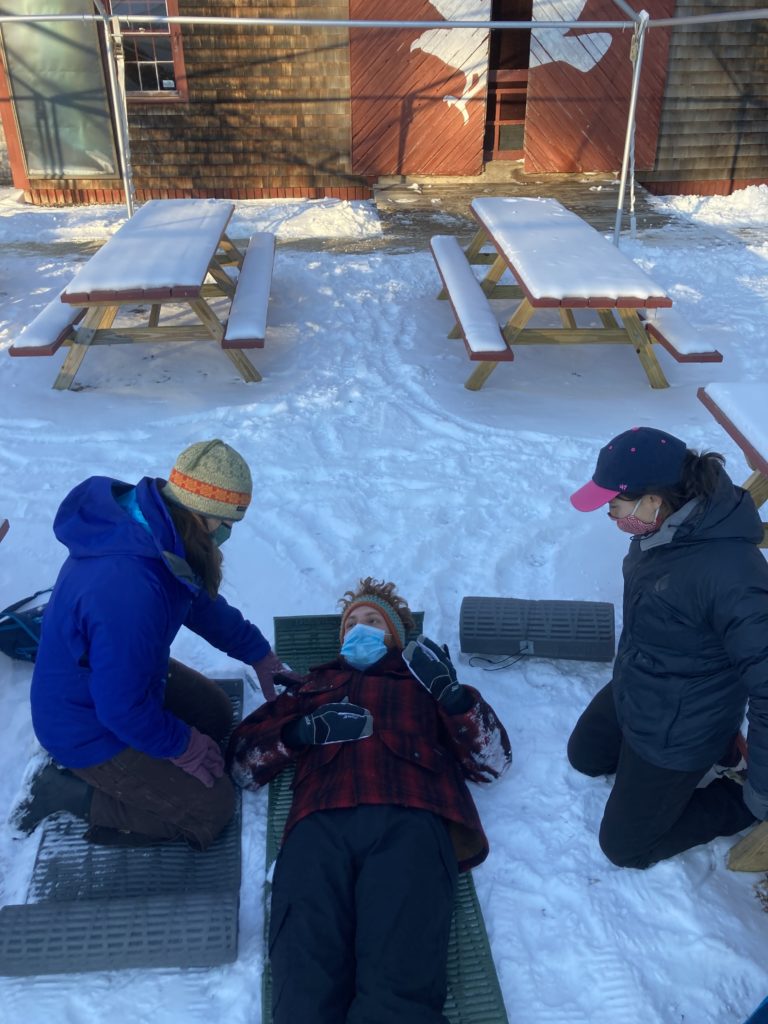
Chewonki hosted two courses, back to back: a 5-day hybrid WFR, and a 3-day Open Recertification course for existing WFRs. For both, students complete an extensive study guide and exam before their arrival on site. This allows us to maximize our time together for practical drills and scenarios. In these, students spend close to equal time as a ‘primary’ rescuer, an assistant, and a patient. Some even volunteer for the role of Incident Commander, allocating resources and coordinating the evacuation in real time. We have long known that students learn just as much from playing the role of a patient as they do playing that of a rescuer. Integrating these experiences helps students navigate not just the technical skills involved, but the interpersonal ones too.
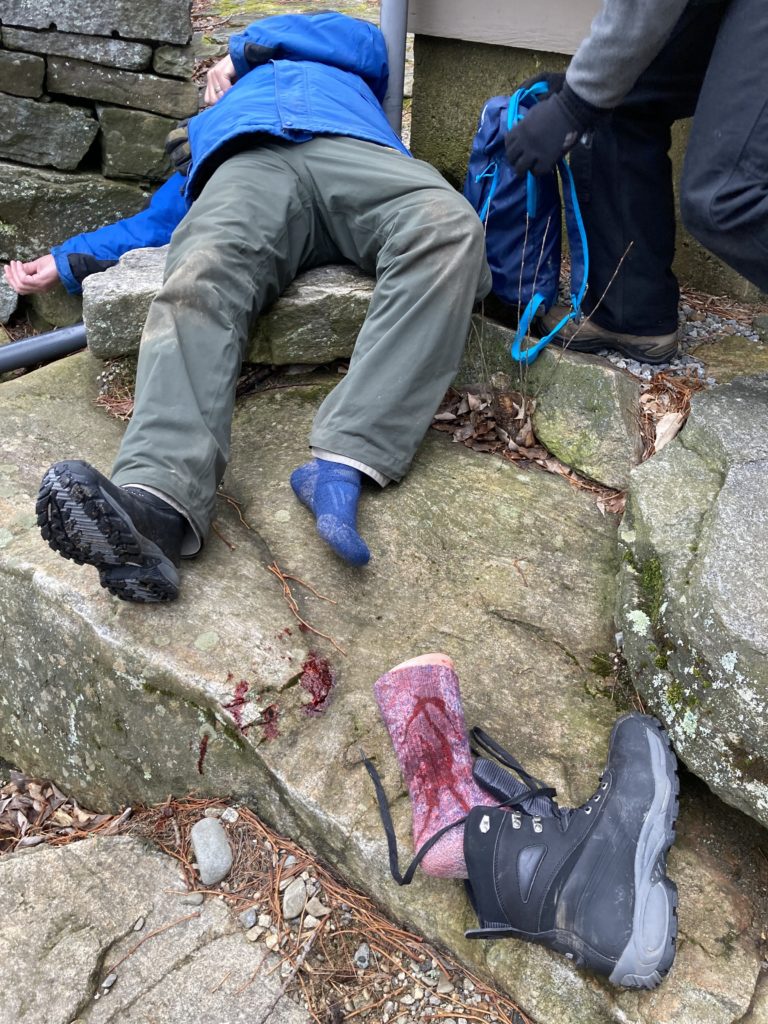
This year’s students brought a range of interesting backgrounds with them to Chewonki Neck, and a remarkable amount of outdoor experience too. We had Maine forest rangers, professional fishing guides, NOLS and Chewonki instructors, a ferry boat captain and crew, high school outing club leaders, Girl Scout leaders, a retired Life Flight pilot, land trust managers, and seasoned outdoor enthusiasts. Each of us were drawn to this training because we all value having time outdoors as a part of our own lives, want to do so as safely as possible, and appreciate the chance to work with kindred spirits in person.
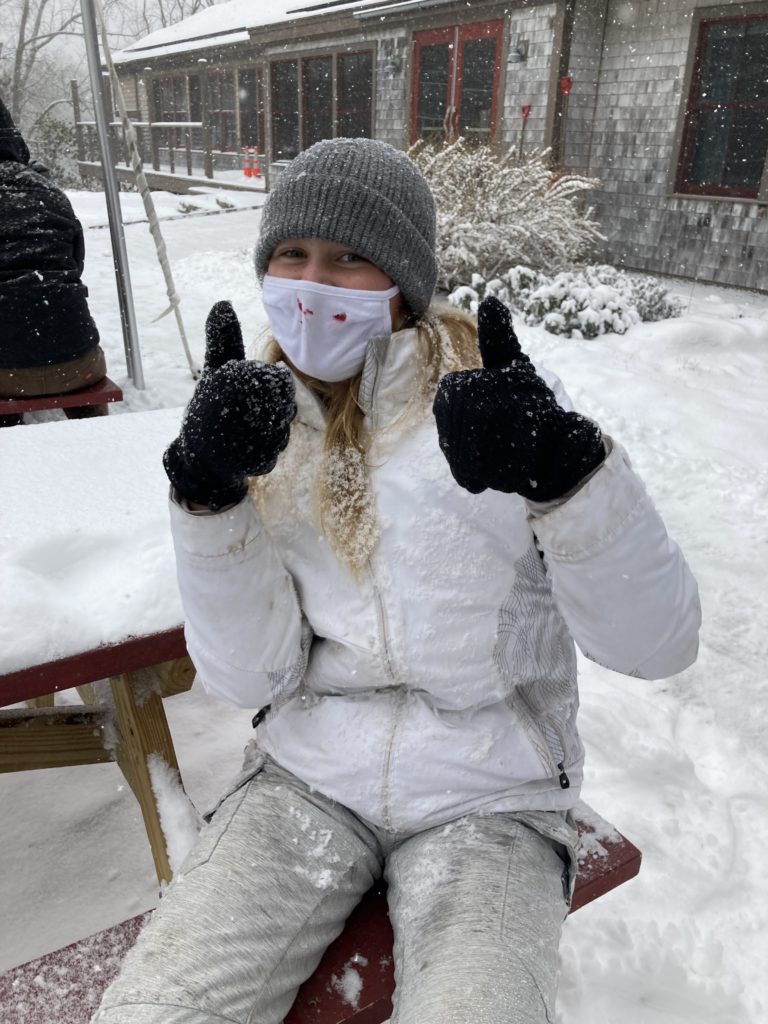
But I have to say that the best part for me was when a snow day forced local schools to close, and my youngest daughter Fiona joined the last day of the 5-day WFR. Her parents had met in a WEMT class (Kelley Borg Duffy – US History, MCS 41 ), so she and her sister (12 and 14 years old) have watched from the sidelines since diapers. But last summer, they were old enough to start connecting the dots on their own. That’s when they got a chance to audit a WFA class for ‘Chewonki trip leader training trip’ ?? that I was teaching at 4th Debsconeag. The participants welcomed them into the mix, and our time there ranks among the very best of our family trips ever! So, when Fiona joined us this time, she was primed for her roles as a patient with a bloody nose, and another who was flashblind. But she also got to practice giving a shot of saline into an apple, as if it was epinephrine into a thigh- and I confess, it was a proud dad moment.
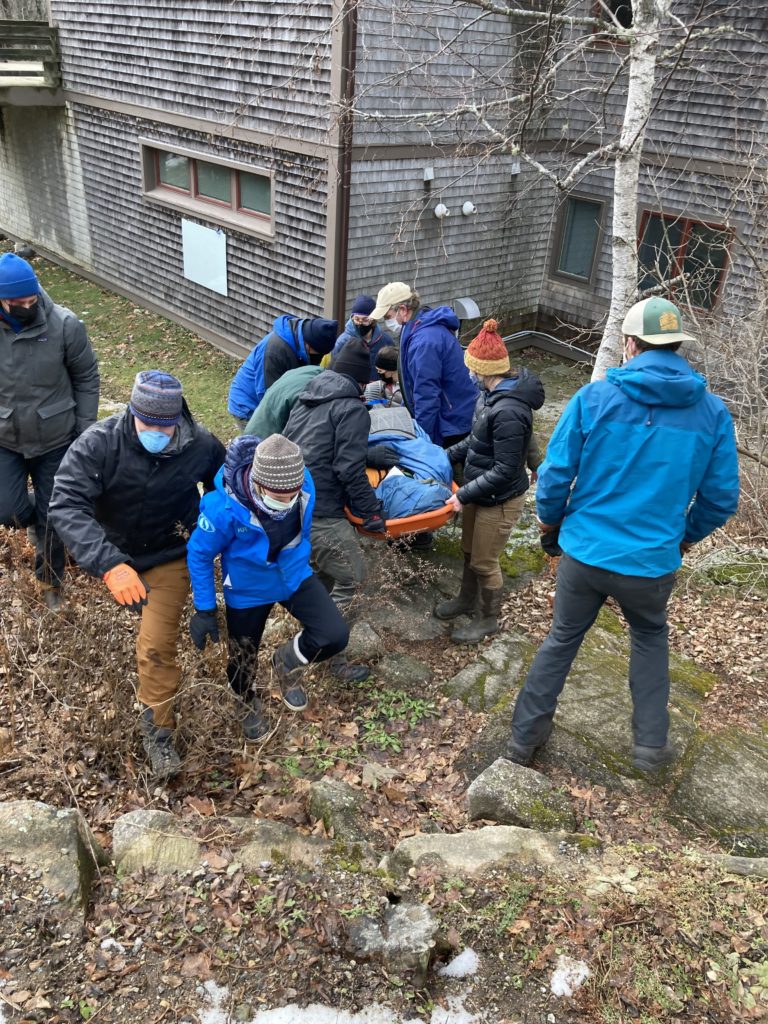
I don’t mean to wax nostalgic, but this course cycle marked the 22nd anniversary of two important moments in my own career: my first two days teaching for WMAI, and my first time ever at Chewonki! Over the years since, I’ve conducted dozens of trainings there, and even worked as Chewonki’s health center coordinator from 2007-2010. I left when I had a chance to go to nursing school – and my experience prepared me well for the evolution from EMT to RN. My path then went through the ICU to the ED for a few years, and in 2016 became the Health Center Director at Lincoln Academy, coordinating the school-based health center there since. But I’ve always come back to teach at Chewonki whenever I can.
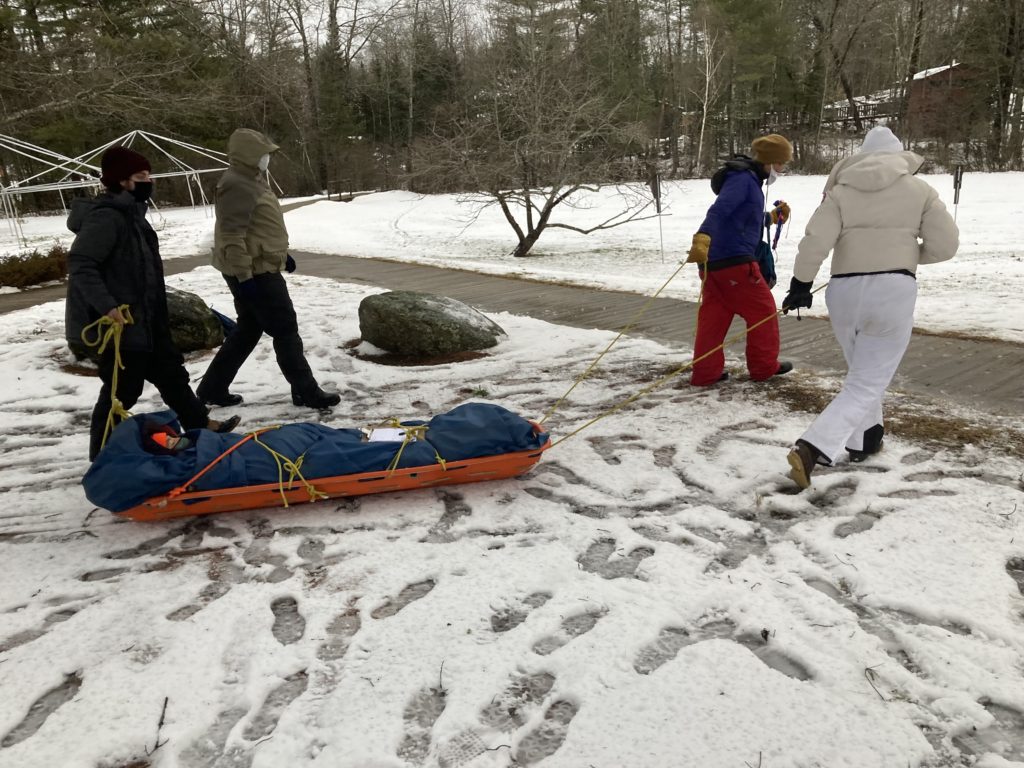
Why am I so personally and professionally committed to supporting the educational programs here? Because Chewonki walks its talk. WMAI does too. Their roots in the Maine coast inform their perspective, while their work has both a worldwide intent and impact. The kinds of educational experiences offered by both organizations are not retail products that can be returned when the customer is dissatisfied. Doing it well requires thoughtfulness, training, and support for the mission. I’ve taught all over the northeast, for all sorts of programs over the years. I can honestly say that, in my experience, there really are very few organizations that do it as well as Chewonki.
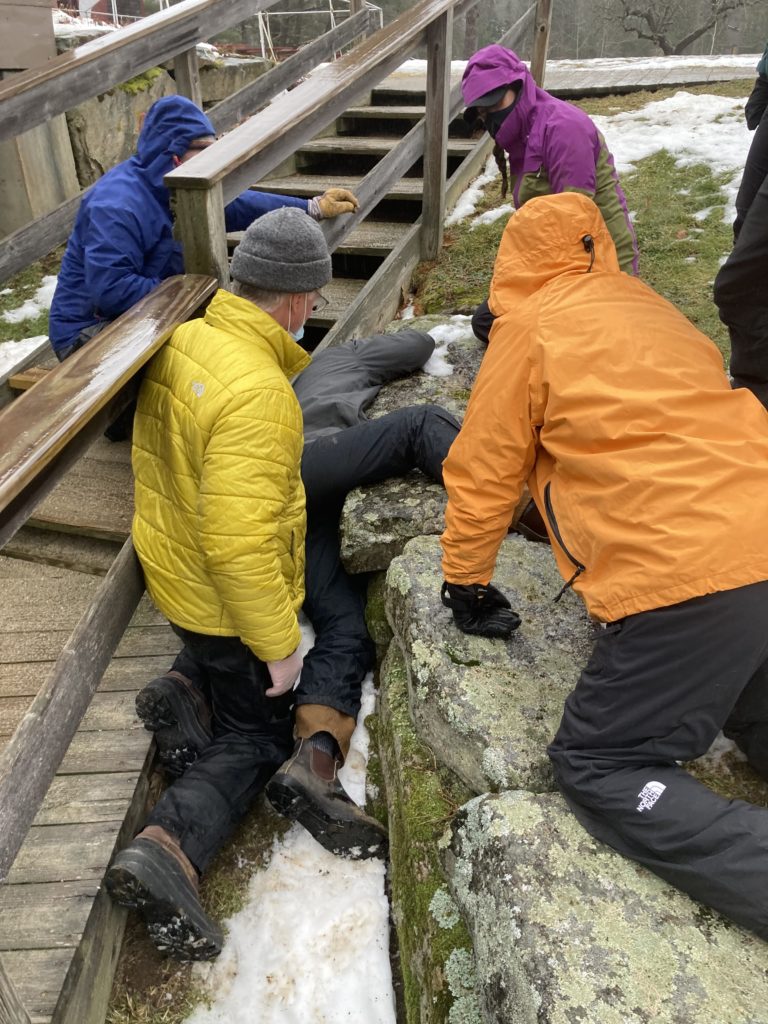
I once heard Don Hudson describe it as a place that is framed by rigorous scientific study, pure aesthetic appreciation, and being outside for its own sake – with Chewonki navigating the space in between. A natural outgrowth of this, he said, was intentional communal living, and a commitment to treading lightly not just on the trails we walk, but the lands and waters all around us.
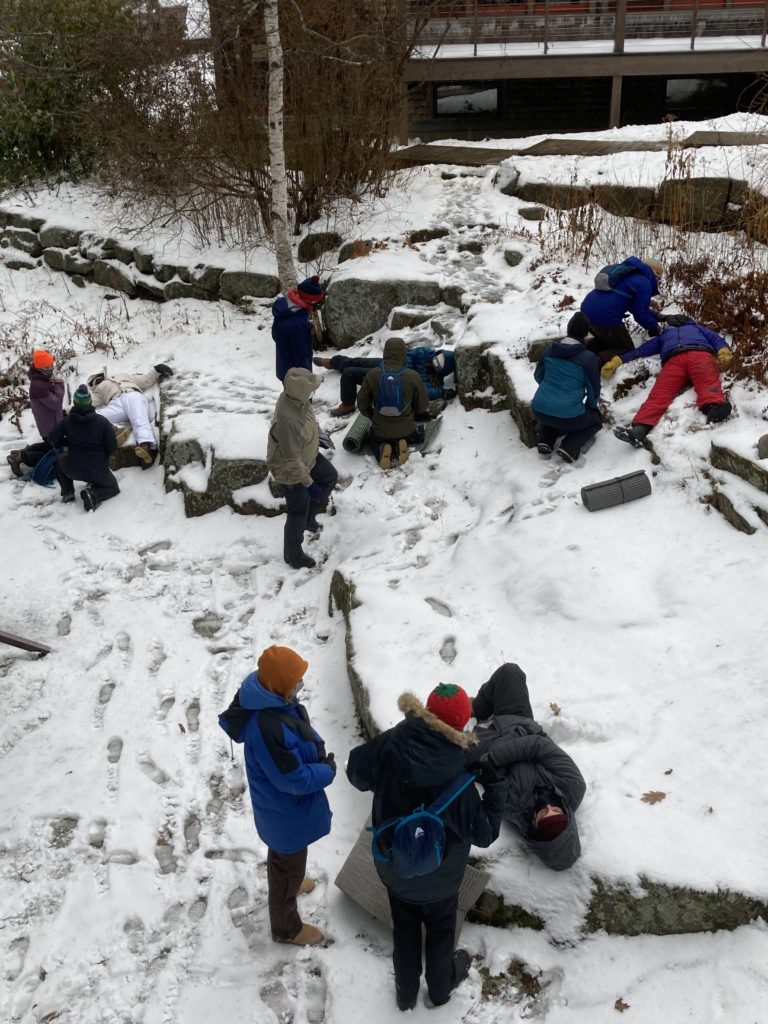
That has always stuck with me, and I’ve been so glad to see Willard carry this mission forward, while adapting to all sorts of environmental changes and challenges along the way. With all this said, I struggle to describe how excited I am that both of my own daughters will be doing their first Chewonki programs this summer! I know first hand that they’ll be in good hands, and I am grateful to pass along the tradition.
Eric Duffy is a Registered Nurse, Wilderness EMT, and Registered Maine Guide. He also has a BA in English and an MA in Theology. Eric first took a WFR in 1996, and became an instructor for Wilderness Medical Associates International in 2001. Yet, that both of his daughters could use a wag bag on an island by the age of 4, and it was no big deal, is what he considers to be his greatest achievement in life.
